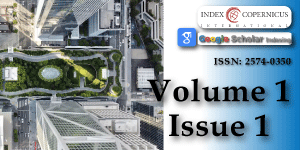Natural and effective ways of purifying lake water
Main Article Content
Abstract
Water resources play an integral part in the life of a living being. The various water resources that are present on the earth’s surface are in the form of oceans, seas, lakes, rivers, ponds, waterfalls etc. Among these water resources Lakes and reservoirs are vital for people’s life, industrial activities and many other day to day activities. These water resources help in obtaining water for drinking after being treated. They also provide water for agriculture and industrial usage, fishery resource, flood control functions and many other activities. Due to the closed nature of lakes’, the waste material from sewage, agricultural effluents, domestic and industrial fields, gets accumulated around the surface of these water resources and once the water gets polluted, it gets strenuous to improve the quality of the water. In the study, the authors have examined different effective ways by which the quality of lake water can be improved.
Article Details
Copyright (c) 2017 Lokhande S, et al.

This work is licensed under a Creative Commons Attribution 4.0 International License.
Agarwal AK, Rajwar GS. Physico-chemical and microbiological study of Tehri dam reservoir, Garhwal Himalaya, India. J American sci. 2010; 6: 65-71. Ref.: https://goo.gl/mrmNJm
Bhattacharya A, Shandilya A. Lake Water Pollution and Treatment. Int J Emerg Tech. 2017; 8: 49-52. Ref.: https://goo.gl/jKkAqy
Educational Britannica Educational. The geography of India: sacred and historic places. The Rosen Publishing Group. 174. Ref.: https://goo.gl/FvZ8H4
Sonal T, Kataria HC. Physico-Chemical studies of water quality of Shahpura lake, bhopal (mp) with special reference to pollution effects on ground water of its fringe areas. Current World Environment. 2012; 7: 139-44. Ref.: https://goo.gl/t3GJPm
Moore JW, Ramamoorthy S. Heavy metals in natural waters: applied monitoring and impact assessment. Springer Science & Business Media. 2012. Ref.: https://goo.gl/WivnFj
Jain N. Investigation of heavy metal toxicity in ground water at Shahpura area at Bhopal. South Asia Journal of Multidisciplinary Studies. 2016; 2. Ref.: https://goo.gl/wSukMk
Hickey M, King C. The Cambridge illustrated glossary of botanical terms. Cambridge University Press. 2000. Ref.: https://goo.gl/2ndA4G
Dhote S, Dixit S. Water quality improvement through macrophytes: a case study. Asian J Exp. Sci. 2007. 21: 427-30. Ref.: https://goo.gl/7AKTid
Clarke SJ, Reynolds CS, Codling ID. Review of Eutrophication-related R & D. Environment Agency. 2001. Ref.: https://goo.gl/sZYpqt
Crites RW. Design Manual: Constructed wetlands and aquatic plant systems for municipal wastewater treatment. US environmental protection agency, office of research and development. Center for Environmental Research Information. 1988. Ref.: https://goo.gl/nP7Qhu
Rao AR, Kumar B. The use of circular surface aerators in wastewater treatment tanks. Journal of Chemical Technology and Biotechnology. 2007; 82: 101-107. Ref.: https://goo.gl/r4u2BD
Chen JH, Hsu YC, Chen YF, Lin CC. Application of gas-inducing reactor to obtain high oxygen dissolution in aeration process. Water research. 2003; 37: 2919-2928. Ref.: https://goo.gl/F6P2tM
Dixit S, Verma N, Tiwari S. The effects of aeration units on water quality in Upper Lake, Bhopal, India. Electronic green journal. 2005. Ref.: https://goo.gl/Xu5Cga
Apha A. Standard methods for the examination of water and wastewater. 1998; 20. Ref.: https://goo.gl/s4ACBa
Goldman C, Horne A. Limnology, Mc Graw-Hill Book co. London. 1983: 464.
Guidance Manual for Drinking water Quality Monitoring and assessment. NEERI. 2007. Ref.: https://goo.gl/1bnqWn
Dixit S, Dixit S. Cost-Effective and Eco-Friendly Methods for Lake Water-Purification. Hydro Nepal: Journal of Water, Energy and Environment. 2015; 16: 40-43. Ref.: https://goo.gl/1tGkjg

